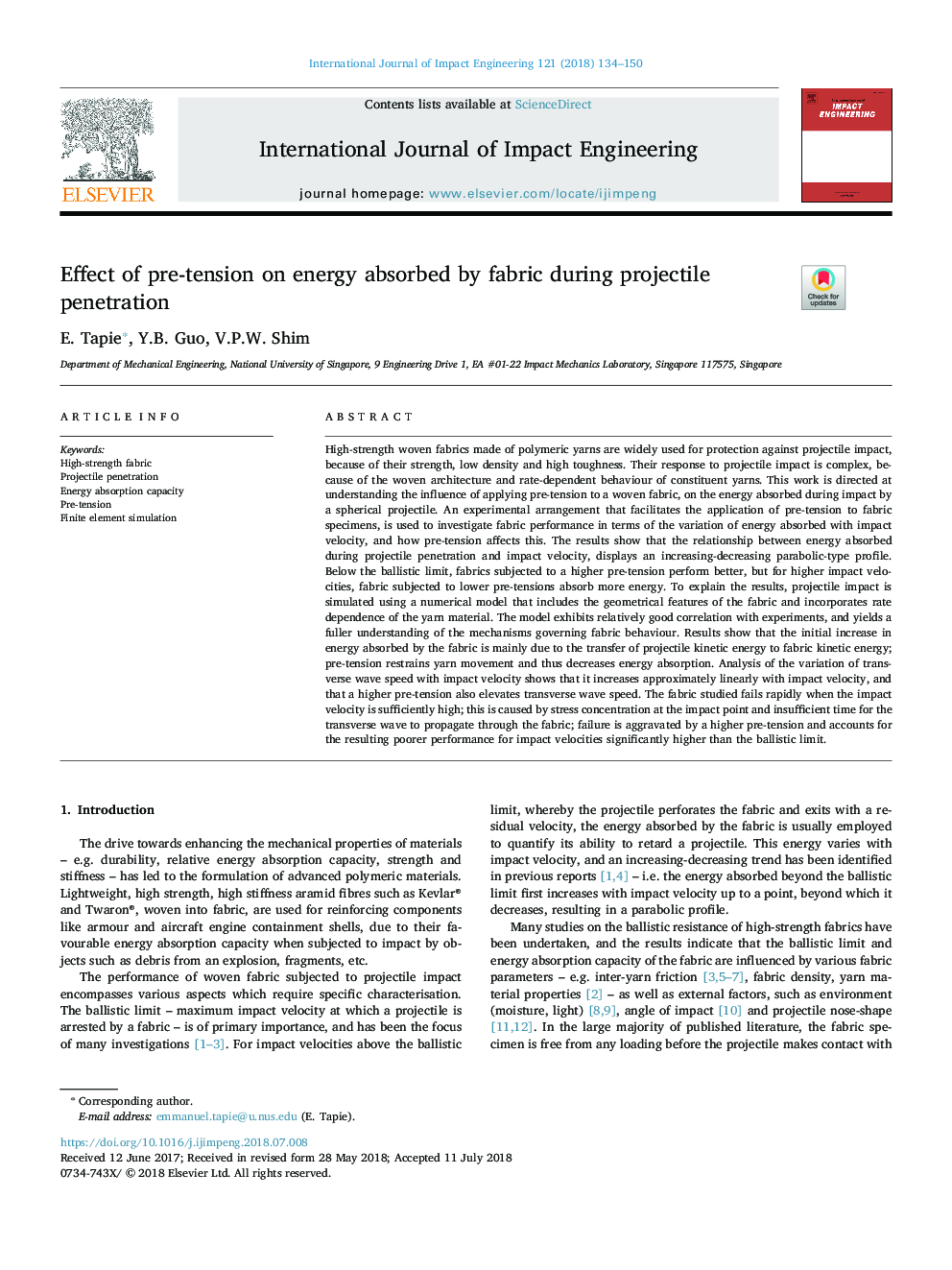| Article ID | Journal | Published Year | Pages | File Type |
|---|---|---|---|---|
| 7172888 | International Journal of Impact Engineering | 2018 | 17 Pages |
Abstract
High-strength woven fabrics made of polymeric yarns are widely used for protection against projectile impact, because of their strength, low density and high toughness. Their response to projectile impact is complex, because of the woven architecture and rate-dependent behaviour of constituent yarns. This work is directed at understanding the influence of applying pre-tension to a woven fabric, on the energy absorbed during impact by a spherical projectile. An experimental arrangement that facilitates the application of pre-tension to fabric specimens, is used to investigate fabric performance in terms of the variation of energy absorbed with impact velocity, and how pre-tension affects this. The results show that the relationship between energy absorbed during projectile penetration and impact velocity, displays an increasing-decreasing parabolic-type profile. Below the ballistic limit, fabrics subjected to a higher pre-tension perform better, but for higher impact velocities, fabric subjected to lower pre-tensions absorb more energy. To explain the results, projectile impact is simulated using a numerical model that includes the geometrical features of the fabric and incorporates rate dependence of the yarn material. The model exhibits relatively good correlation with experiments, and yields a fuller understanding of the mechanisms governing fabric behaviour. Results show that the initial increase in energy absorbed by the fabric is mainly due to the transfer of projectile kinetic energy to fabric kinetic energy; pre-tension restrains yarn movement and thus decreases energy absorption. Analysis of the variation of transverse wave speed with impact velocity shows that it increases approximately linearly with impact velocity, and that a higher pre-tension also elevates transverse wave speed. The fabric studied fails rapidly when the impact velocity is sufficiently high; this is caused by stress concentration at the impact point and insufficient time for the transverse wave to propagate through the fabric; failure is aggravated by a higher pre-tension and accounts for the resulting poorer performance for impact velocities significantly higher than the ballistic limit.
Related Topics
Physical Sciences and Engineering
Engineering
Mechanical Engineering
Authors
E. Tapie, Y.B. Guo, V.P.W. Shim,
